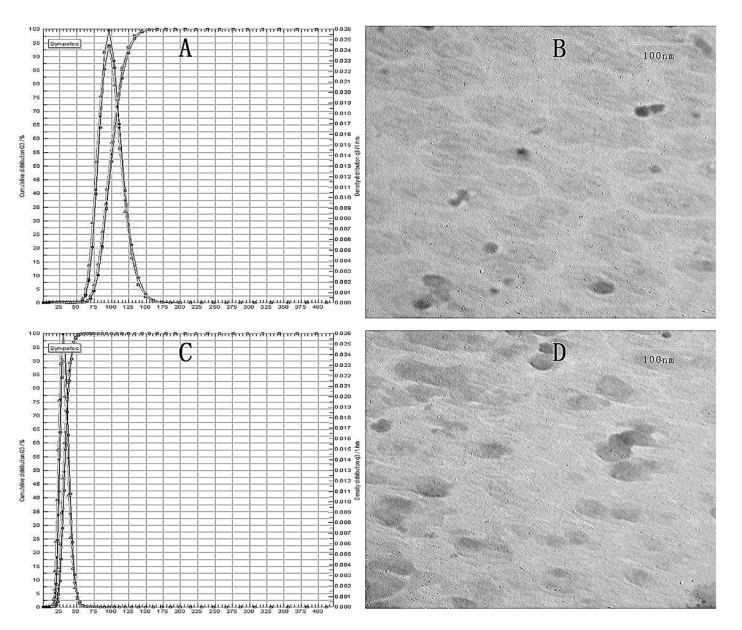文献:Vincristine liposomes with smaller particle size have stronger diffusion ability in tumor and improve tumor accumulation of vincristine significantly
文献链接:https://pubmed.ncbi.nlm.nih.gov/29152080/
作者:Siyu Ma, Mingyuan Li, Nan Liu, Ying Li, Zhiping Li, Yang Yang, Fanglin Yu, Xiaoqin Hu, Cheng Liu and Xingguo Mei
相关产品:MSPC
原文摘要:The passive targeting is the premise of active targeting that could make nanocarrier detained in tumor tissue. The particle size is the most important factor that influences the diffusion and distribution of nanoparticle both in vivo and in vitro. In order to investigate the relationship between particle size and diffusion ability, two kinds of liposome loaded with Vincristine (VCR-Lip) were prepared. The diffusion behavior of VCR-Lip with different particle size and free VCR was compared through diffusion stability study. The diffusion ability from 12-well culture plate to Millipore transwell of each formulation reflected on HepG-2 cytotoxicity results. Different cell placement methods and drug adding positions were used to study the VCR-Lip
diffusion behaviors, which influenced the apoptosis of HepG-2 cell. The different cell uptake of Nile red–Lip and free Nile red was compared when changed the adding way of fluorescent fluorescein. To study the penetration ability in HepG-2 tumor spheroids, we constructed 30 nm and 100 nm Cy5.5-Lip to compare with free Cy5.5. Then the anti-tumor effect, tissue distribution of free VCR injection, 30 nm and 100 nm VCRLip were further investigated on the HepG-2 tumor bearing nude mice. The results of these study showed that the diffusion ability of free drug and fluorescent fluorescein was remarkable stronger than which encapsulated in liposomes. Moreover, diffusion ability of smaller liposome was stronger than larger one. In this way, 30 nm liposome had not only faster and stronger tumor distribution than 100 nm liposome, but also
higher tumor drug accumulation than free drug as well. Our study provided a new thinking to improve the targeting efficiency of nano drug delivery system, no matter passive or active targeting.
绝大多数关于靶向给药系统的研究集中在寻找新的靶标、新配方、新材料或更特殊的修饰,以提高靶向效果。然而,大量研究的实际效果并没有明显提高的靶向效率。被动靶向是纳米载体将药物进入tumor组织前提,可以使纳米载体滞留在tumor组织中。颗粒大小是影响纳米颗粒在体内和体外的扩散和分布的因素。
100 nm脂质体制备:DPPC:MSPC:DSPE:PEG2000,质量比为85:10:5,溶解在氯仿中,溶液经溶剂蒸发干燥,真空干燥器干燥形成薄膜。然后用酒石酸钠缓冲液将磷脂水合成多层囊泡(MLVS)。这些MLVS用细胞破碎机超声处理以获得小的单膜囊泡。30 nm脂质体的制备方法如下:将磷脂溶解在无水醇中,加入pH4.0的酒石酸钠缓冲液。通过溶剂蒸发去除酒精。用细胞将这种脂质溶液破碎机超声,直到脂质溶液变得透明。通过透析去除残留的酒精。
脂质体的特征
采用激光颗粒分析仪测定了粒径,并用透射电镜进行了形态学表征。如图A和C所示,大颗粒VCR-Lips为100.0±2.5 nm,小颗粒为30.0±1.6 nm。结果还表明,用两种不同的方法测量的粒径是一致的。100 nm的VCR-Lips的VCR封装效率为96.28±2.38%,30nm的封装效率为94.73±5.26%。两种VCR-Lips的载药量分别为1.70±0.12 mg/mL和1.59±0.46 mg/mL。

图:A C为粒径分布;B D为VCR-Lip两种粒径的透射电镜图像
结论:利用大、小粒度的脂质体和游离药物或荧光素来证明其体内外不同的扩散能力。结果表明,游离药物具有最强的扩散能力,稀释后在溶液中能迅速扩散到均匀性。对于载药脂质体,较大尺寸脂质体的扩散能力比小的那个要弱。颗粒大小在一定程度上影响了体内和体外向细胞表面的扩散,减小脂质体的颗粒尺寸保留了脂质体的特性和较强的扩散能力。

 2024-12-18 作者:ZJ 来源:
2024-12-18 作者:ZJ 来源:

